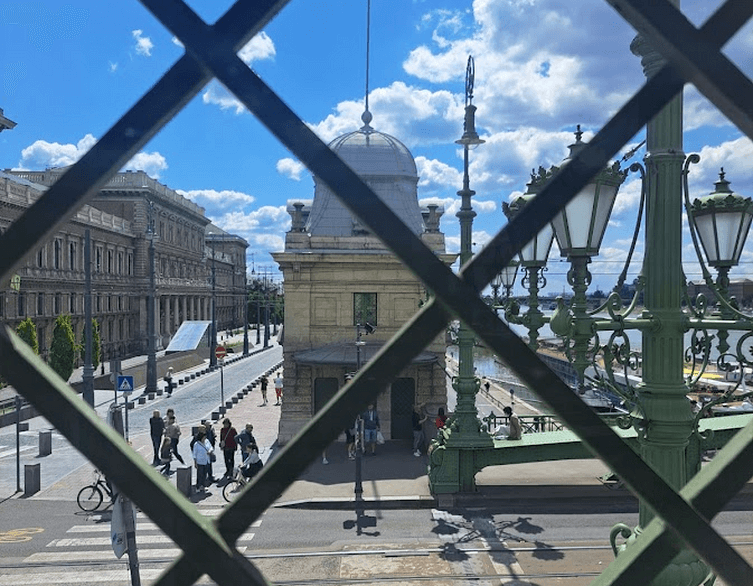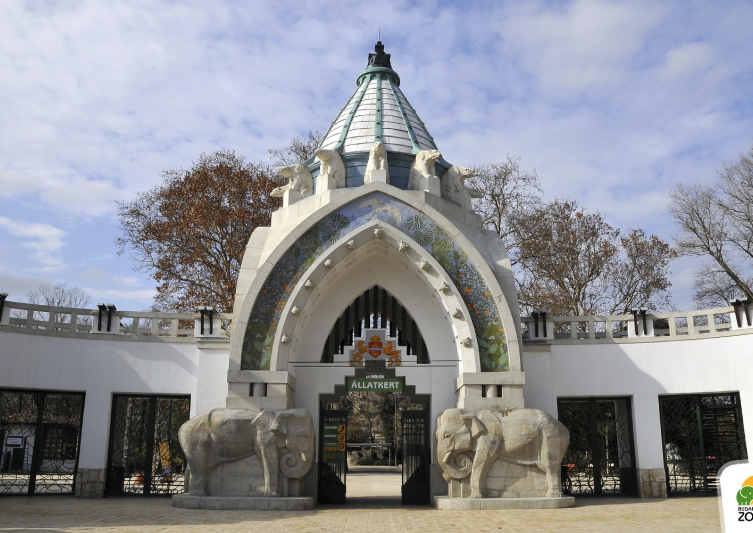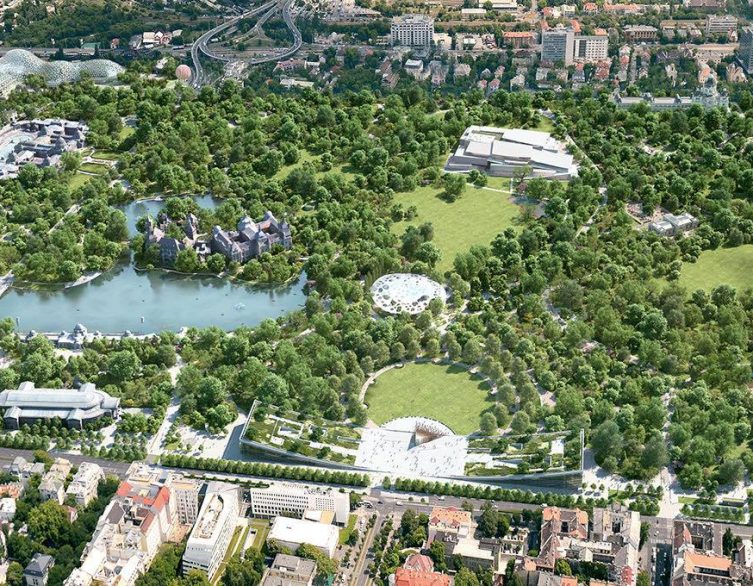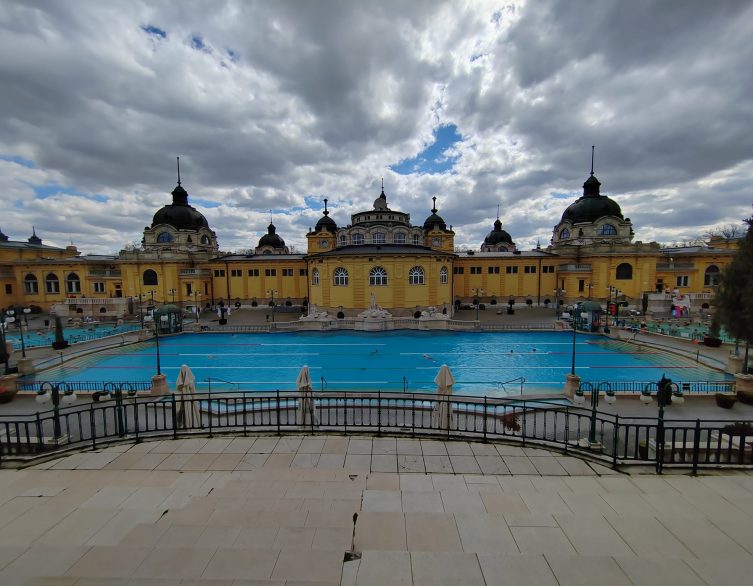The House of Hungarian Music in Budapest – An Architectural Marvel Filled with Melodies
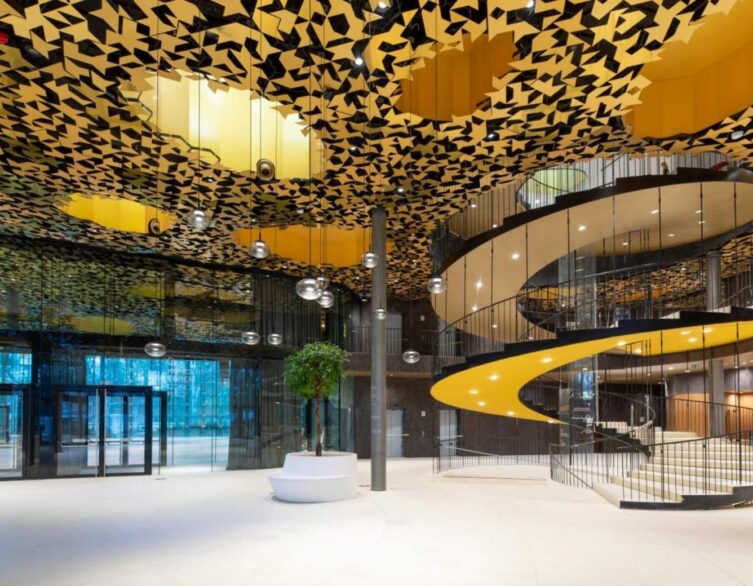
The House of Hungarian Music, located in Városliget, is a must-visit attraction for music lovers and architecture enthusiasts alike. This iconic building, designed by renowned Japanese architect Sou Fujimoto, seamlessly blends nature and the built environment, creating a unique and immersive experience for visitors. In this article, we will explore the historical and architectural significance of the House of Hungarian Music, provide directions on how to get there, and highlight some nearby attractions.
Historical Significance
The decision to construct the House of Hungarian Music was made in 2013 as part of the Liget Budapest Project. A team of music, theater, and museum professionals was assembled to develop the basic concept of the new institution, drawing inspiration from various music museums and memorial centers around the world. The objective was to create a space where visitors could familiarize themselves with the beginnings, history, and physics of music through permanent and temporary exhibitions, while also providing a prominent educational profile and accommodating every musical genre.
Architectural Marvel
In February 2014, an international design competition was announced, attracting close to 170 projects from around the world. The winning design, submitted by Sou Fujimoto Architects, was revealed in December 2014. The construction of the House of Hungarian Music began in September 2018 and was completed in 2021.
Best deals of Budapest
Fujimoto’s vision was to erase the boundaries between nature and the built environment, giving visitors the feeling of strolling through a park even when inside the building. To achieve this, a monumental ‘glass curtain’ embraces the building instead of brick walls, lending it complete transparency and airiness. The façade, unrivaled in Europe, is composed of 94 individually manufactured glass panels reaching almost 12 meters in height.
The building’s tripartite organization is reflected in its innovative internal structure. The underground level houses exhibitions, while the park level is dedicated to performing arts, with a glass-walled concert hall and open-air stages near the Városliget Lake. The top level provides spaces for quiet study and education.
Sustainability was a key consideration in the design and implementation of the House of Hungarian Music. Most of the building’s energy supply comes from renewable sources, including geothermal energy from 120 heat pumps placed 100 meters underground and long-distance cooling generated by the nearby Ice Rink’s excess capacity during summer.
Getting There
Nestled in the heart of Budapest’s City Park (Városliget), the House of Hungarian Music is easily accessible by public transportation. Visitors can take the M1 (yellow line) metro to the Széchenyi fürdő station or the M3 (blue line) metro to the Hősök tere station, both of which are just a short walk from the building. Alternatively, trolleybus lines 70 and 72 stop directly at the Városliget (Liget Budapest) stop, right in front of the House of Hungarian Music. For those who prefer buses, lines 20E, 30, 30A, 105, and 230 also stop at the Városliget (Liget Budapest) stop, making it convenient for visitors to reach this stunning cultural destination.
Nearby Attractions
As you embark on your journey to the House of Music Hungary, take the opportunity to immerse yourself in the surrounding attractions that Budapest has to offer. Just a short distance away, you’ll find the iconic Heroes’ Square (Hősök tere), where the impressive Millennium Monument stands tall, flanked by statues of notable Hungarian leaders who have shaped the nation’s history.
For a moment of relaxation and rejuvenation, make your way to the Széchenyi Thermal Bath, one of the largest thermal bath complexes in Europe. Here, you can unwind in the soothing waters and let the mineral-rich pools work their magic on your body and mind.
Nature enthusiasts will delight in a visit to the Budapest Zoo and Botanical Garden, a historic institution that has been captivating visitors since 1866. With a diverse collection of animals and plants from around the world, this zoo offers a fascinating glimpse into the wonders of the natural world.
Finally, step back in time at the enchanting Vajdahunyad Castle, a stunning architectural gem that showcases a variety of styles from Hungary’s rich history. As you wander through its picturesque courtyards and halls, you’ll be transported to a bygone era of grandeur and romance.
The House of Hungarian Music is a testament to the power of innovative architecture and the importance of preserving and celebrating musical heritage. With its stunning design, engaging exhibitions, and diverse range of events, this attraction is sure to captivate visitors from around the world. So, when planning your next trip to Budapest, be sure to include the House of Hungarian Music on your itinerary.
Photo source: zenehaza.hu
Related news
Related events
Related attractions



























